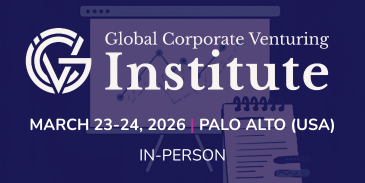The reality is that the key to building an important and valuable company usually lies somewhere in between meddling and focus.
Early stage advanced materials companies are most often born with a healthy dose of science in their DNA. However, as these companies evolve from the lab to the commercial world, the art of business must be genetically engineered in. In our experience working with early stage advanced materials companies, focus is one of the most delicate genes to effectively insert. Focus is a true art: on the one hand, there is a temptation to meddle in every possible application. On the other, there is the repeated message to do one thing and do it well. The reality is that the key to building an important and valuable company usually lies somewhere in between.
Elevator pitches from material scientist entrepreneurs often go something like this: “Sneb Thin Films Inc. is the only company in the world that can grow Tin Selenium Antimony nanostructured films. In the lab we have demonstrated a 25% efficiency solar cell, a 540 nm green LED device, 5 ohms per square transparent electrode, a ZT = 3 thermoelectric and a 2000-cycle silicon anode. We need a $5m series A to scale these up for production.” A more focused pitch from a different hypothetical company with the same underlying technology might be, “Sneb Energy Inc. is the only company that can grow Tin Selenium Antimony nanostructured films on silicon and we need $5m to build a pilot plant for our silicon anode technology.” While the latter is certainly more likely to succeed, neither represents the refined level of focus likely to yield a valuable and important company. Below I highlight four key focus issues that all materials start-ups should consider:
Picking The Right Market
A 2000 cycle silicon anode is an amazing result but this does not necessarily mean that is a precursor to building a great company. The fact that there are a dozen plus silicon anode start-ups probably makes it a BAD idea to start another. The fact that Sony, Panasonic, Samsung and others have their own technology in this area probably makes it a WORSE idea. Combine questionable market size, a crowded intellectual property (IP) landscape and a challenging industry to penetrate, and the headwinds are really quite severe. Selecting a market with tailwinds is the most important decision in the infancy of a materials start-up. This is where interacting with a venture firm with a broad outside perspective can be a powerful combination in picking the right one.
Creating a Path to be the Best Company in the World
Many of the entrepreneurs we talk to either operate as if they are in a world with out competition or as if they are happy to be the best shop in town. It goes without saying that Sneb Thin Films has a 0% chance of being the best in the world with any of the chosen applications. Sneb Energy could very well have the best silicon anode technology in the world but reflecting on the market issues above, will it have the chops to be the very best battery company in the world? Maybe, but their build-a-pilot-plant-and-they-will-come strategy is certainly not how to start.
Planning for Generation Two and Three
The 80:20 rule applies to start-ups. 80% of the effort is focused on getting the first product to market while 20% is spent on what’s next. The first product should meet minimum market requirements, and market entry should primarily facilitate organizational learning about the market and operations while at the same time building a brand. Successful companies like Tesla Motors have illustrated like clockwork how this is done. In advanced materials companies where mergers and acquisitions (M&A) is the likely endgame, acquirers are unlikely to pay a technology premium unless they truly believe that buying a company gives them a long-term sustainable advantage and not just another product stock keeping unit (SKU). What are the second and third acts for Sneb Energy? Are there materials for anodes even better than Tin Selenium Antimony? Is there a matching cathode that unlocks the full potential of the anode? 20% of the time and resources should be focused on this.
Platforms can be a Good Thing
At Pangaea Ventures we have talked to hundreds of companies like Sneb Thin Films over the years and it has been rare for us to see them evolve beyond sample sales while they survive on a multitude of grants. However, successfully executing on a platform technology can greatly increase the potential value and importance of a start-up. Successful strategies include licensing out technology in non-core markets, complimentary product offerings, spinoffs, or initial development sufficient to lock-up early IP. If the platform is engineered to serve a set of markets generally served by natural acquirers, the strategy is more likely to pay off.
There are a lot of moving parts in getting focus right. If you were Sneb, how would you focus to create a new important and valuable company for the world?







